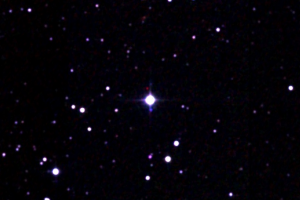From Jovian to mini-Neptunian. The evolution of TOI-1430 b described in the study: “The GAPS Programme at TNG. LXV. Precise density measurement of TOI-1430 b, a young planet with an evaporating atmosphere” of D. Nardiello (UniPD, INAF-OAPD)

Young exoplanets, that is, those orbiting stars no older than a few hundred million years, are of significant scientific interest for studying planetary formation and the processes influencing the early evolution of planets. However, the intense magnetic activity of young stars generates signals that can obscure or mimic those linked to the presence of planets, making their detection and characterization more challenging. To overcome these challenges, it is often necessary to analyze long series of photometric and spectroscopic observations, requiring the collaboration of large scientific teams.
As part of the GAPS (Global Architecture of Planetary Systems) project and the TESS – Keck Survey (TKS) and California Planet Search (CPS) collaborations, a team of researchers led by astrophysicist D. Nardiello (University of Padova and INAF – Astronomical Observatory of Padova) analyzed a vast dataset to characterize the exoplanet TOI-1430 b and its host star. The primary datasets were obtained from NASA’s TESS satellite and the HARPS-N spectrograph at the Telescopio Nazionale Galileo, complemented by observations collected with the Kilodegree Extremely Little Telescope, the WiFSIP camera mounted on the robotic STELLA telescope, the Asiago observatory station, the telescopes of the Las Cumbres Observatory, the Automatic Planet Finder telescope, and the HIRES spectrograph at the Keck Observatory. For characterizing the properties of the host star, data from the European Space Agency’s Gaia satellite were also used.
TOI-1430 b was found to be a mini-Neptune with a mass of 4.2 Earth masses, a radius of 1.98 Earth radii, and an orbital period of 7.4 days. The host star is a K-type star with an effective temperature of approximately 5000 K and an estimated age of 700 million years. Due to its proximity to the star, TOI-1430 b has an extended atmosphere rich in helium which is undergoing evaporation. Based on the properties of the star-planet system, the team developed a model to reconstruct the evolution of TOI-1430 b. Initially, the planet was much more massive and larger, with characteristics resembling those of Jovian planets. However, given the current rate of mass loss, TOI-1430 b is expected to lose its atmosphere completely within approximately 200 million years, transforming into a rocky body similar in size to Earth.
The study is described in the paper: “The GAPS Programme at TNG. LXV. Precise density measurement of TOI-1430 b, a young planet with an evaporating atmosphere“, recently published in Astronomy & Astrophysics. Co-authors include astrophysicists R. Spinelli, A. Maggio, D. Locci, S. Benatti, and L. Affer from INAF – Astronomical Observatory of Palermo.
The cover image (click here to view) shows an infrared image of TOI-1430 obtained as part of the 2MASS (Two Micron All Sky Survey) observation campaign.
Mario Giuseppe Guarcello
Follow MarioSpiegaCose on Instagram () , Facebook (), Youtube (), and X ()
Follow the Astronomical Observatory of Palermo on Facebok and on Instagram
Subscribe the Youtube channel of the Astronomical Observatory of Palermo
